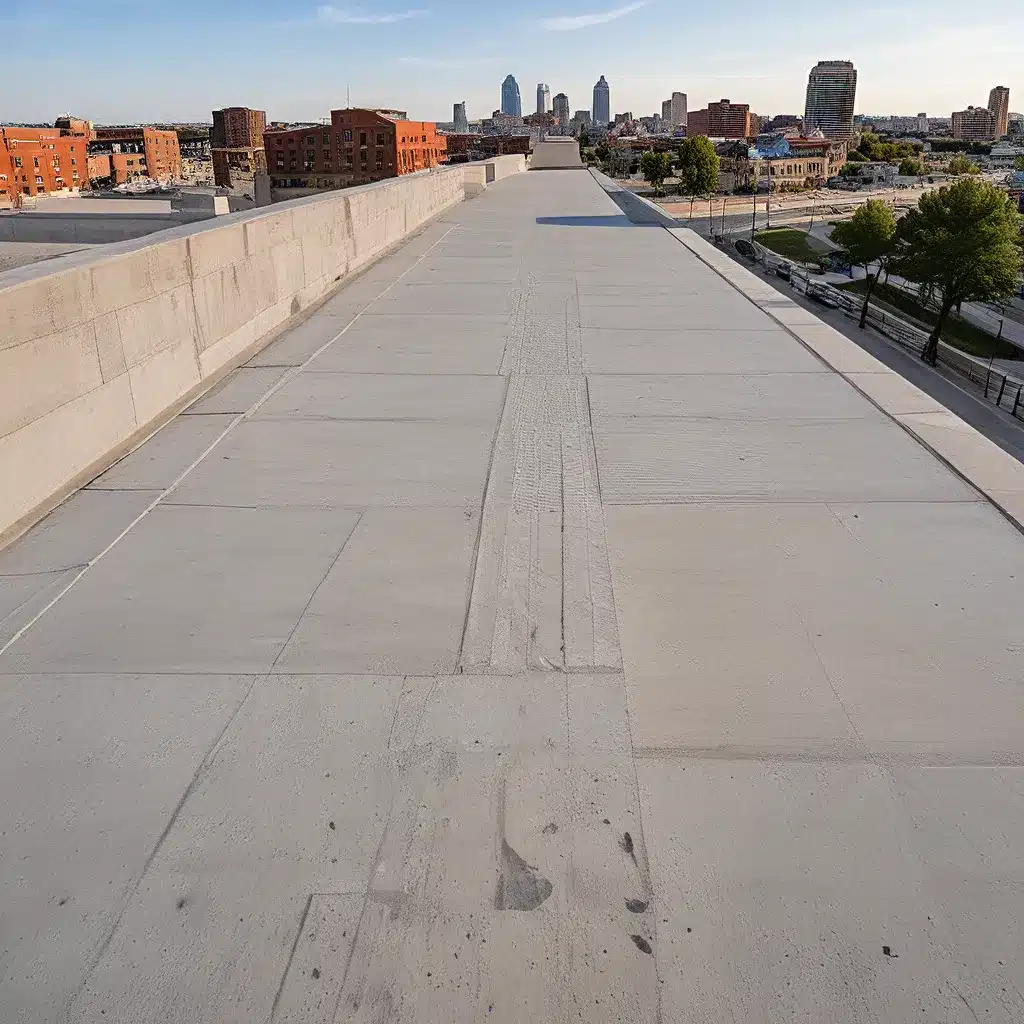
As the heart of the Midwest, Kansas City, Missouri is renowned for its rich architectural heritage, from the iconic 19th-century buildings lining the downtown streets to the well-preserved mid-century modern structures that dot the cityscape. At the core of this architectural legacy is the humble yet essential material that has shaped the face of the city: concrete.
Concrete’s Enduring Influence on Kansas City’s Built Environment
Concrete has long been a cornerstone of Kansas City’s construction industry, dating back to the early 20th century when the city experienced a surge of commercial and residential development. From the grand limestone-clad skyscrapers of the 1920s to the sleek, modernist structures of the post-war era, concrete has played a crucial role in shaping the city’s built environment, preserving its architectural identity for generations to come.
One prime example of concrete’s enduring influence can be seen in the renovation and expansion of the Kansas City Police Department Headquarters, a project that earned an Excellence Award for Innovation from the Historic Kansas City (HKC) organization. By preserving the character of the original 1938 structure while adapting it for modern police use, the project exemplifies the delicate balance between historical preservation and functional modernization that is essential to the longevity of Kansas City’s iconic buildings.
Restoring the Splendor of Kansas City’s Architectural Gems
Across the city, historic preservation efforts have breathed new life into countless concrete-based structures, transforming abandoned or neglected buildings into vibrant hubs of commercial, residential, and cultural activity. Take, for instance, the renovation of the Brass on Baltimore, a former Kansas City Club building that now houses 67 lofts and 9 unique event spaces. By restoring the building’s historic character while incorporating modern amenities, the project showcased the remarkable craftsmanship and attention to detail that defined the architectural styles of the past.
Similarly, the Richard Bolling Federal Building underwent a comprehensive renovation led by Helix Architecture + Design, GastingerWalker, and JE Dunn Construction. The project transformed the existing structure into a high-performance, Class A work environment for 2,800 federal employees, all while preserving the building’s iconic mid-century architecture. This careful balance between historic preservation and functional modernization has become a hallmark of Kansas City’s approach to concrete restoration and rehabilitation.
The Challenges of Concrete Preservation
However, the process of preserving and restoring historic concrete structures is not without its challenges. As highlighted by Maggie Gillam, an architect at Jones Gillam Renz Architects, the negotiations between historic integrity, functional needs, and life safety requirements can be a delicate and demanding endeavor.
“Historic rehabilitation is a constant battle between function and form,” Gillam explains. “It’s wonderful when these two ideas can coexist, but the truth is, often times they cannot. Frequently, we are presented with a historic building whose original design was intended for a totally different use than what we’re exploring as part of the rehabilitation.”
These competing priorities can lead to complex decision-making processes, as developers, architects, engineers, and preservation specialists strive to find the optimal balance between preserving the past and ensuring a building’s long-term viability. In some cases, the costs of structural repairs and restoration may outweigh the benefits of maintaining a historic structure, leading to difficult choices about demolition and redevelopment.
Embracing Innovation in Concrete Preservation
Despite these challenges, the concrete contractors and preservation specialists of Kansas City have risen to the occasion, demonstrating a deep commitment to safeguarding the city’s architectural heritage. By leveraging the latest materials and techniques, these professionals have found innovative ways to breathe new life into historic concrete structures, ensuring that they can continue to serve the community for generations to come.
One such example is the work of Concrete Contractor Kansas City, a local firm that has specialized in the restoration and rehabilitation of historic concrete buildings. By employing advanced concrete repair and preservation methods, the company has been able to extend the lifespan of many of Kansas City’s most iconic structures, preserving their structural integrity while maintaining their distinctive architectural character.
In addition to their technical expertise, these concrete preservation professionals have also played a vital role in educating the public about the importance of historic building conservation. By sharing their knowledge and highlighting the unique challenges of working with historic concrete, they have helped to foster a greater appreciation for the craftsmanship and resilience that define Kansas City’s architectural legacy.
Investing in the Future of Kansas City’s Concrete Landmarks
As Kansas City continues to evolve and grow, the preservation of its historic concrete structures remains a critical priority. By investing in the restoration and rehabilitation of these architectural gems, the city can safeguard its unique identity and build a more sustainable, livable future for all its residents.
Through collaborative efforts between developers, architects, engineers, and preservation specialists, Kansas City can leverage the enduring strength and versatility of concrete to revitalize its historic neighborhoods, attract new businesses and residents, and celebrate the rich cultural heritage that has defined the city for generations. By embracing the craftsmanship and innovation of the past, Kansas City can forge a path forward that honors its architectural legacy while meeting the demands of the modern world.

